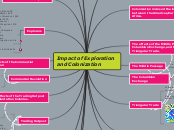realizată de BARRAK MANSOUR 2 ani în urmă
132
Water Crisis in yeman
Water pollution has far-reaching consequences on both the environment and human populations. Contaminants such as heavy metals, pesticides, and hydrocarbons drastically alter water quality, making it unsafe for consumption and harmful to aquatic life.









